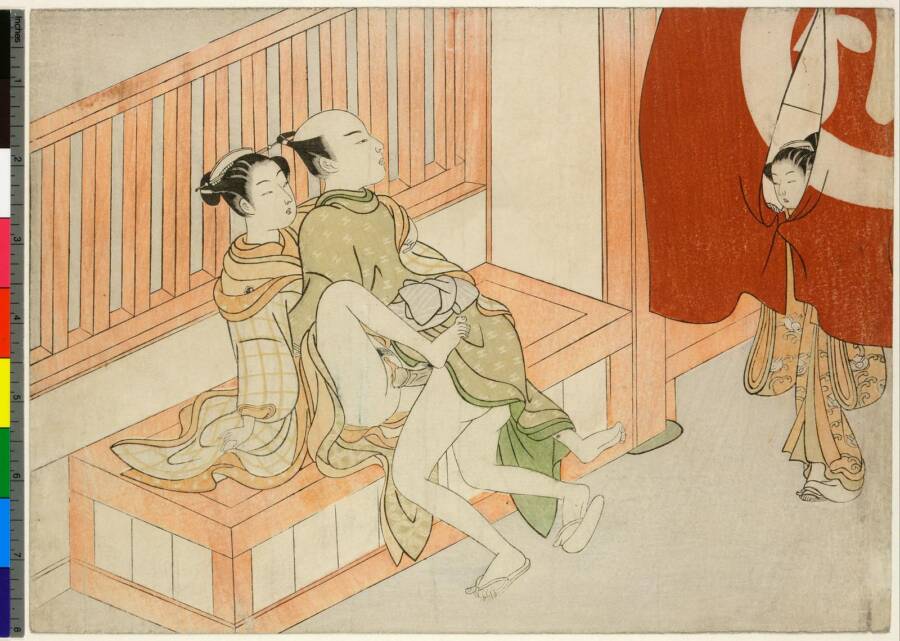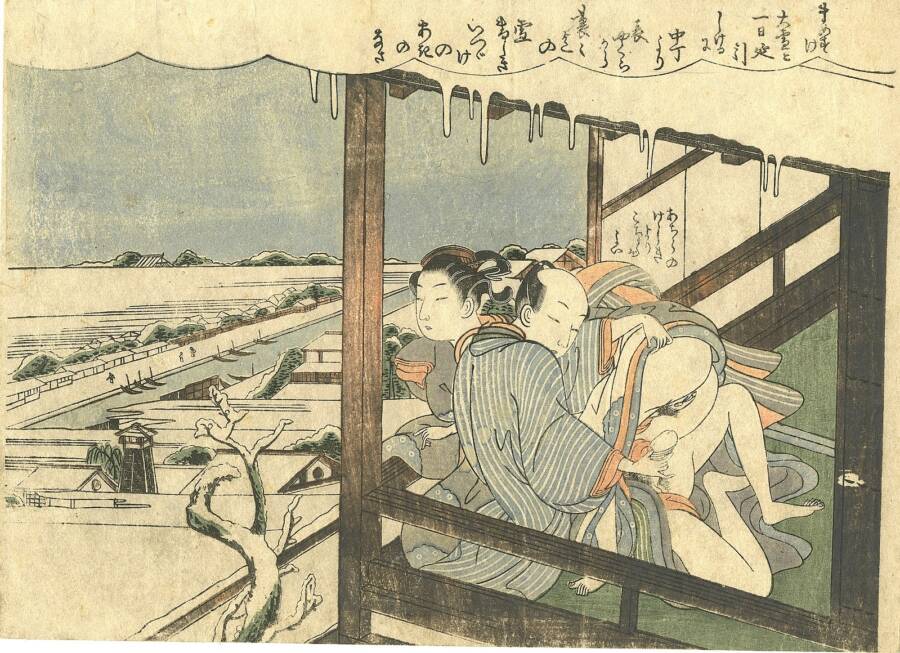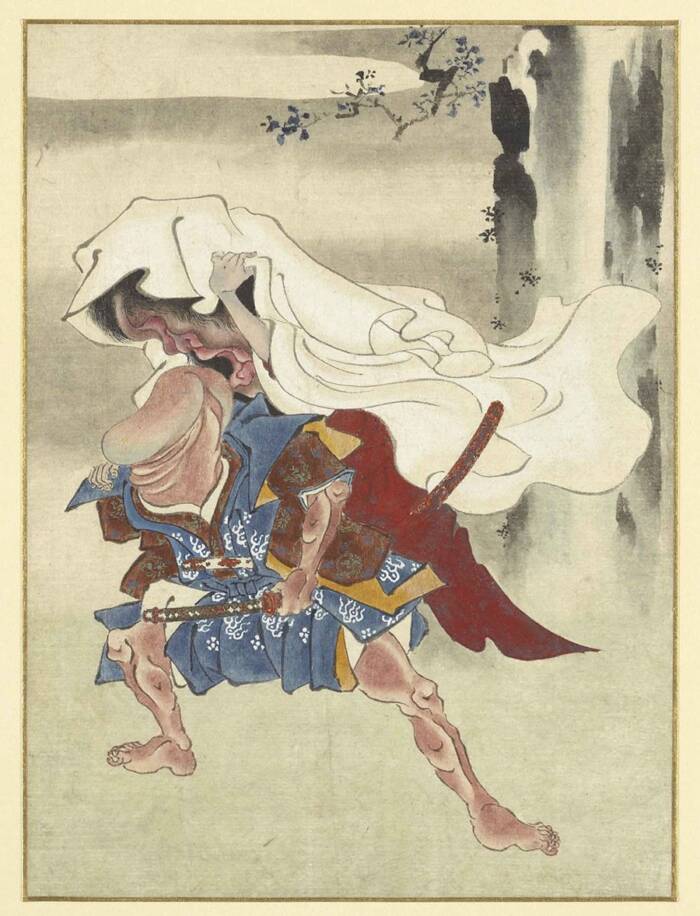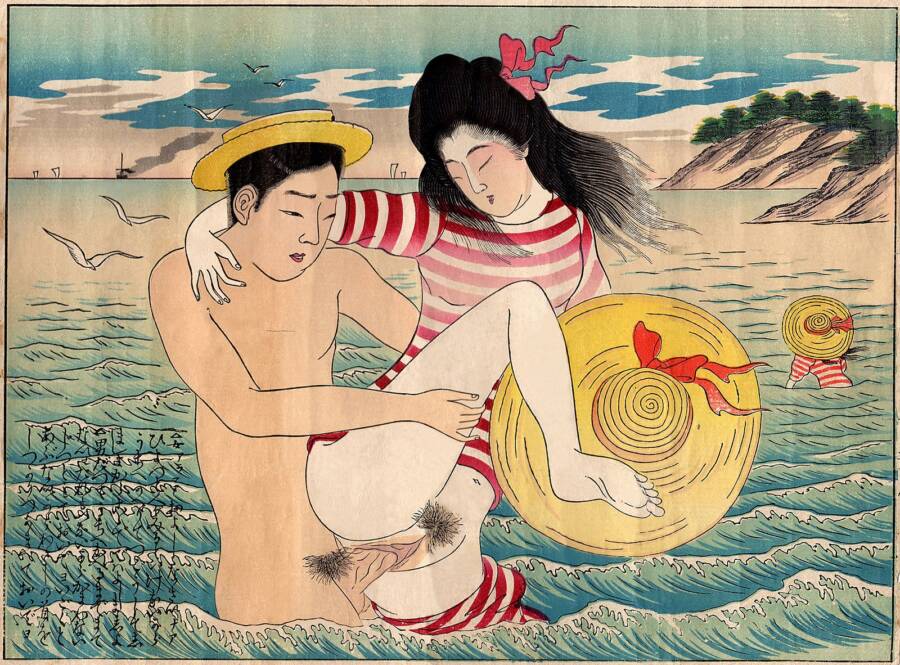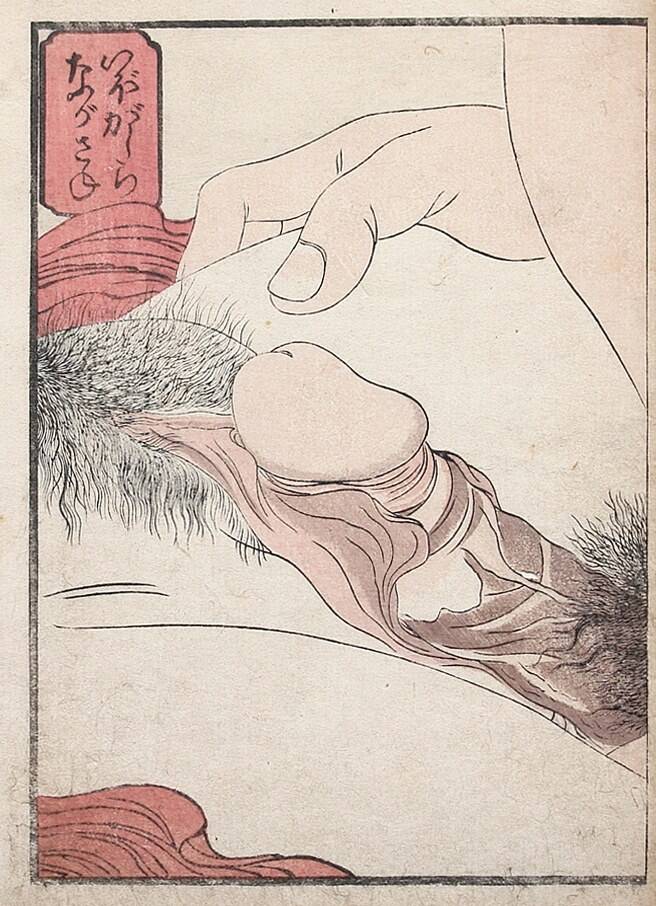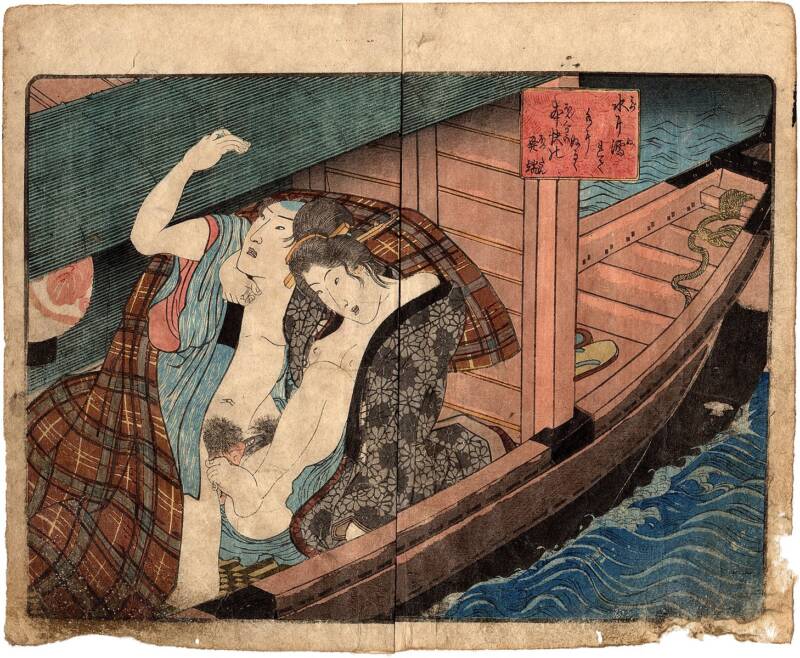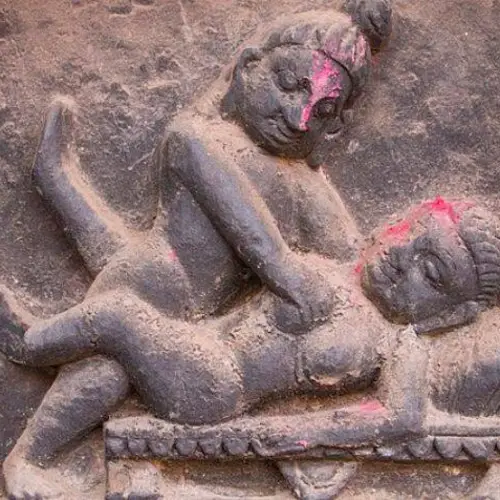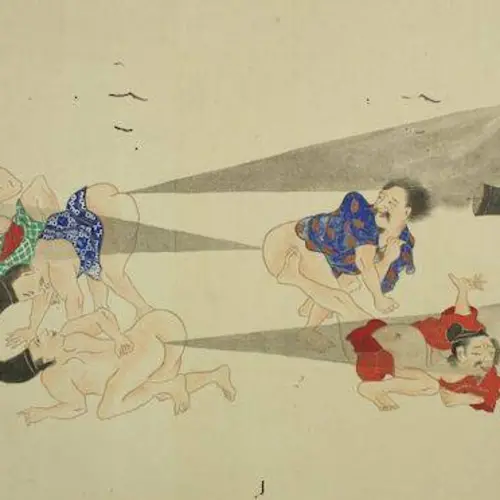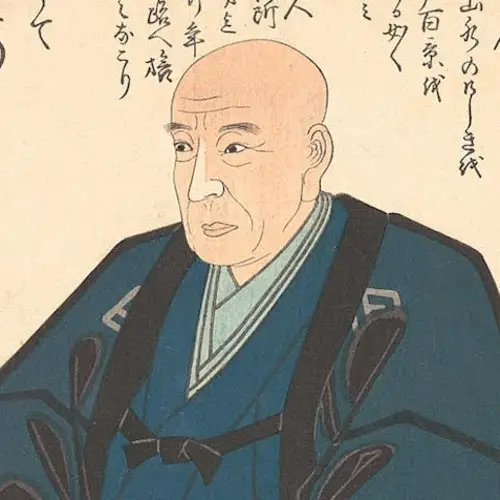During Japan's Edo period, shunga became popular with everyone from rural peasants to the wealthy ruling class — even after it was outlawed in 1722.
The words “Japanese erotic art” may bring to mind the modern genre known as hentai, which might in turn conjure up the concept of “tentacle porn” — but as it turns out, fetishizing cephalopods is far from a new idea. In fact, the practice dates back to 17th-century Edo Japan with the art form known as shunga.
Shunga, which translates to “spring pictures,” refers to erotic prints or paintings created in the ukiyo-e style. Ukiyo-e means “pictures of the floating world,” and it flourished between the 17th and 19th centuries.
Ukiyo-e artists depicted contemporary urban subjects such as kabuki actors and sumo wrestlers using woodblock prints and paintings. They also illustrated scenes from folk tales and history, landscapes, and flora and fauna.
It was a wide-ranging genre that led to some of the most well-known Japanese artworks of all time — and some of the most brazenly erotic. Dive into the history of Japanese erotic art below.
The History Of Shunga In Japan
Though shunga became popular at the dawn of the Edo period in 1603, its roots go back much further. As early as the 700s, the courtier class had handscrolls with explicit illustrations of royals and monks engaged in sexual acts.
By the 17th century, woodblock printing had emerged, making it easier for artists to distribute their work quickly and widely. Soon, shunga was available to everyone from peasants to monarchs. There were even traveling lending libraries that brought the art to rural areas.
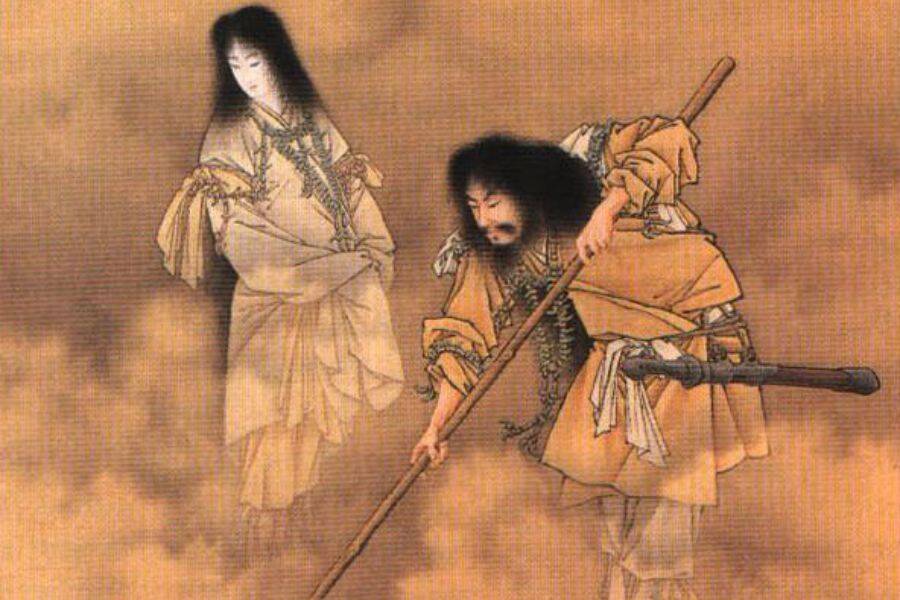
Public DomainIzanami and Izanagi, the gods who created Japan. Painting by Kobayashi Eitaku, c. 1885.
Newlyweds sometimes received gifts of shunga for educational purposes. Samurai carried the illustrations into battle as lucky charms against death. Married couples even kept books of the Japanese erotic art in their homes to view with friends who came to visit.
An American businessman named Francis Hall, who described shunga as "vile pictures executed in the best style of Japanese art," experienced this firsthand when he visited Japan in 1859. According to the Ronin Gallery, he was shocked when his acquaintance brought out several explicit illustrations to welcome Hall into his home.
Hall wrote:
"He went to a drawer and brought something which he said was very valuable, and... placed in my hands three or four very obscene pictures. His wife stood close by and it was apparent from the demeanor of both that there was not a shadow of suspicion in their minds of the immodesty of the act or the pictures themselves."
The Japanese shogunate had officially banned shunga in 1722. Of course, this didn't stop artists from creating it — or viewers from purchasing it. Nearly every ukiyo-e artist was in the business of shunga, as it was highly profitable. They simply stopped signing their names on their pieces so the art couldn't be traced back to them.
In fact, one of the most famous works of shunga — The Dream of the Fisherman's Wife, which depicts a woman engaging in sexual acts with two octopuses — was created by Katsushika Hokusai, the same artist behind the famous print The Great Wave off Kanagawa.
According to Artsy, around 2,000 individual works of shunga were printed throughout history, and thousands of copies were made of each piece. The genre's popularity declined in the 19th and 20th centuries as erotic photography emerged — but not before it inspired artists like Pablo Picasso and Henri de Toulouse-Lautrec.
Characteristics Of Japanese Erotic Art

Public DomainThe Dream of the Fisherman's Wife by Japanese artist Katsushika Hokusai, one of the most famous examples of shunga.
Shunga, like other works of ukiyo-e art, drew inspiration from the common people of the Edo period. It harkened back to Japan's cultural roots, which did not traditionally see sex as something shameful.
In fact, according to Japan Objects, Japanese erotic art sought, on some level, to normalize sex — which partly explains why many of the figures featured in the prints are not fully nude.
For hundreds of years, nudity was fairly desexualized in Japan. Farmers often tended their rice fields nude or partially nude, and the Shinto religion leaned heavily on sex in its creation tales. Meanwhile, mixed public baths made people accustomed to seeing each other naked.
To compensate, and to make the art more erotic, shunga artists frequently exaggerated the genitalia of their subjects — sometimes to the point of absurdity.
This also meant that while Japanese erotic art was certainly viewed for sexual reasons, it was also seen as humorous and was even later used for satirical purposes during the Russo-Japanese War.
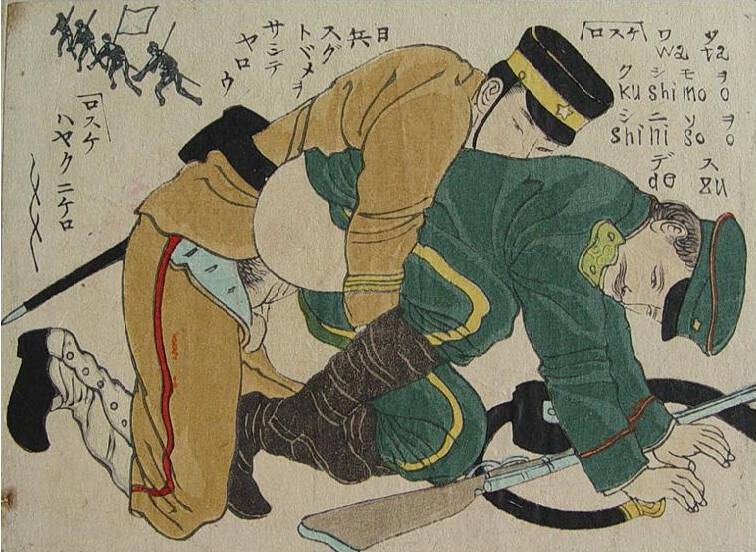
Public DomainShunga depicting a Japanese soldier sexually dominating a Russian soldier.
Ultimately, the influence of shunga on modern Japanese erotic art is clear, even at a glance. Many of the same motifs — and fantasies — are still utilized in modern erotic and pornographic images, often referred to as hentai in the West.
It would be easy to simply write off shunga as nothing more than smut or porn, but that would ignore the larger cultural influence of these prints. Of course, they are inherently sexual in nature, but they are reflective of a period in Japanese history that was starkly different from contemporary Western countries.
After learning all about the history of Japanese erotic art, check out these 29 pieces of erotic art throughout history. Or, explore more Japanese art and learn about the life of Utagawa Hiroshige, the master of woodblock printing.
